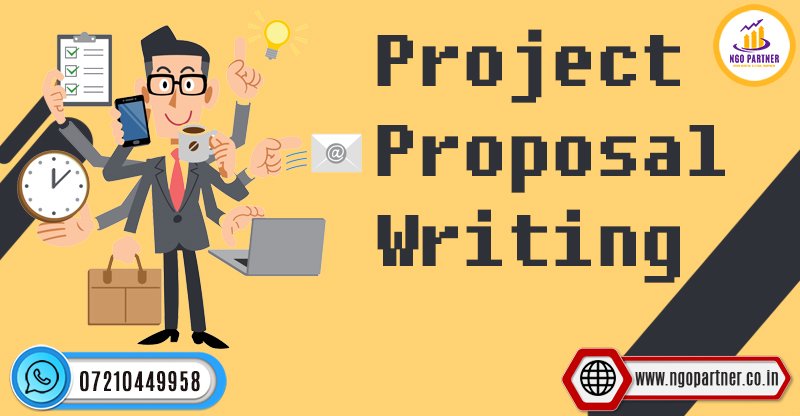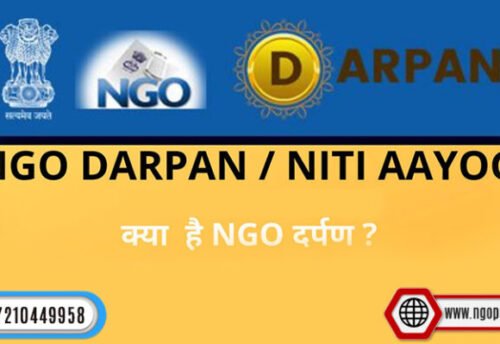
- June 19, 2023
- NGO Partner
- 0 Comments
- 1224 Views
- 0 Likes
- Marketing Company Blogs
Steps for writing a Project Proposal
What is a Project Proposal?
A project proposal is a formal document that outlines a plan for a specific project. It’s essentially a “sell sheet” that convinces a decision-maker (like a manager or funding agency) to approve your project. In today’s fast-paced and competitive world, turning ideas into reality requires more than just vision and enthusiasm. It requires a well-crafted project proposal that can secure the funding and support needed to bring those ideas to life. Whether you’re an entrepreneur seeking investment, a nonprofit organization applying for grants, or a student presenting a research project, a compelling project proposal is your key to success.

We will delve into the fundamental aspects of project proposals, including their purpose, structure, and content. From understanding the key components to mastering the art of persuasive writing, we will equip you with the knowledge and tools to develop project proposals that stand out from the rest.
Whether you’re a seasoned professional or new to the world of project proposals, this blog post will provide valuable insights, practical tips, and real-life examples to enhance your proposal writing skills. By the end of this post, you will have the confidence and expertise to create compelling project proposals that can secure the necessary resources to turn your ideas into impactful realities.
Key Components of a Project Proposal
- Project Summary: This section provides an overview of the project, highlighting its objectives, target audience, and expected outcomes. It serves as an executive summary, capturing the essence of the proposal and enticing readers to delve deeper.
- Objectives: Clearly defined objectives outline the specific goals the project aims to achieve. These objectives should be SMART (Specific, Measurable, Achievable, Relevant, and Time-bound), providing a clear direction for project implementation and evaluation.
- Methodology: The methodology section describes the approach and strategies that will be employed to accomplish project objectives. It explains the activities, resources, and tools that will be utilized, ensuring transparency and feasibility.
- Timeline: A well-planned timeline outlines the project’s major milestones, activities, and deliverables. It provides a clear schedule for project implementation, enabling stakeholders to assess the project’s progress and ensure timely completion.
- Budget: The budget section details the financial resources required for project implementation. It includes both the estimated costs and a breakdown of how the funds will be allocated. A well-structured and realistic budget enhances the credibility and feasibility of the project.
Each section of the project proposal should be clear, concise, and aligned with the project’s goals and objectives. It is crucial to provide supporting evidence, such as data, research findings, or case studies, to strengthen the proposal’s credibility. By presenting a compelling and well-structured project proposal, you increase the likelihood of gaining the necessary support and resources to bring your project to life.
How to write a project proposal
To write an effective project proposal, it is essential to follow certain tips and best practices. Firstly, be concise and avoid unnecessary jargon or technical language. Use clear and straightforward language to ensure that your proposal is easily understood by all readers. Secondly, adopt a structured approach by organizing your proposal into sections, using headings and subheadings to create a logical flow. This helps readers navigate through the proposal and locate information easily.
One crucial aspect is addressing the needs of the target audience. Tailor your proposal to match the interests and priorities of the readers, highlighting how your project aligns with their objectives. This increases the chances of gaining their support and engagement.
Crafting a compelling executive summary is vital as it serves as a snapshot of your entire proposal. Summarize the key elements of your project, including its objectives, methodology, and expected outcomes. Make it engaging and persuasive, capturing the reader’s attention and motivating them to explore the proposal further.
Outline project deliverables clearly, specifying the tangible results or outputs that will be produced. Use measurable indicators to demonstrate the project’s progress and impact. Show how your project addresses a specific problem or need, emphasizing the value it brings to the target audience or community.
Why we need Project Proposals?
A project proposal serves as a roadmap for success, outlining the plan and strategies to achieve project objectives. It is a formal document that communicates the purpose, scope, and feasibility of a project to stakeholders and potential funders. The proposal not only presents a clear plan but also demonstrates the project’s potential value and impact.
A well-crafted project proposal plays a vital role in gaining stakeholder buy-in and securing the necessary resources for project implementation. It provides decision-makers with a comprehensive understanding of the project, instilling confidence in its feasibility and potential for success. A strong proposal effectively communicates the project’s value proposition, addressing the needs and priorities of stakeholders, and presenting a compelling case for support.
Project Proposal Evaluation and Review
Regularly reviewing and revising your project proposal is crucial to ensure its alignment with stakeholder expectations and funding requirements. Seek feedback from colleagues, mentors, or experts in the field to gain different perspectives and identify areas for improvement. Incorporate their suggestions to enhance the clarity and effectiveness of your proposal.
Understanding how project proposals are evaluated is essential for increasing your chances of success. Funders and decision-makers often consider various criteria when assessing proposals, such as the project’s feasibility, relevance, impact, and sustainability. They may also evaluate the qualifications and experience of the project team, the budget’s realism, and the alignment with their funding priorities. By understanding these evaluation criteria, you can tailor your proposal accordingly, addressing the specific areas of interest and demonstrating how your project meets the funders’ expectations.
In conclusion, a well-prepared project proposal holds immense significance in securing support for project implementation. Throughout this blog post, we have highlighted key points to consider when crafting an effective project proposal. We discussed the importance of clarity, feasibility, and alignment with project goals, as well as the need to address the needs of the target audience. Remember to be concise, use a structured approach, and emphasize the value and impact of your project.
Related: Funding Proposal: Securing Support for Your Vision
Four common project proposal types are:
- Solicited: Responding to a formal request (RFP) outlining project needs.
- Unsolicited: Proposing a new idea without a prior request.
- Internal: Gaining approval within your organization for resources.
- External: Securing funding or buy-in from outside your organization.
A strong project proposal lays out 4 key elements:
- Goals & Needs: Explain the problem you’re solving or opportunity you’re seizing.
- Solution & Approach: Detail your plan to achieve the goals, including key activities.
- Deliverables & Timeline: Outline what will be produced and the project timeframe.
- Team & Evaluation: Show your team’s qualifications and how you’ll measure success.



Leave a Comment